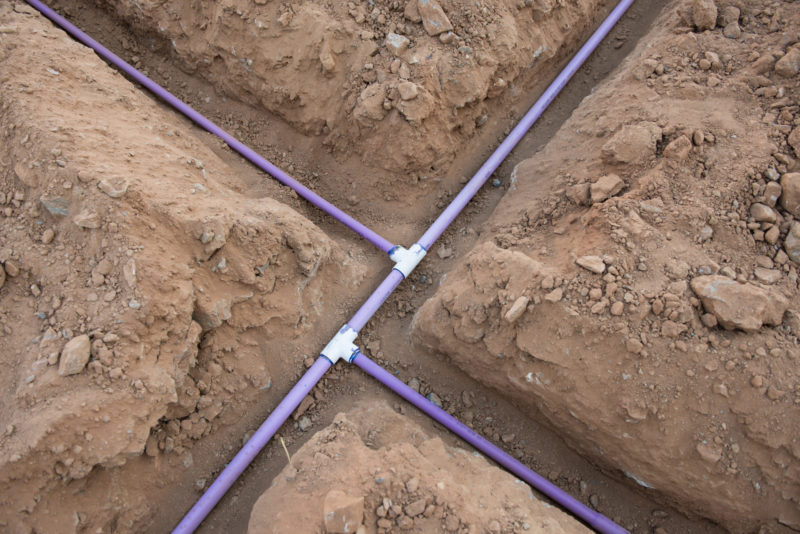
PVC vs PE Pipe: Which is the Best Option for Your Irrigation Pipeline in 2023
In the world of irrigation, selecting the right type of pipe is crucial for the success and longevity of your system. Two popular choices for irrigation pipelines are polyvinyl chloride (PVC) and polyethylene (PE) pipes.
Discussions among long-term users can turn into arguments with each trying to explain which is better. However, both are well-suited for irrigation, with each having its characteristics and advantages. For this reason, making the decision is a matter of personal preference and specific project requirements.
How do PE and PVC pipes differ?
Material Properties
Both PVC and PE pipes are made of plastic, but they have distinct properties that set them apart. PVC pipes are rigid and not flexible, while PE pipes are flexible and lightweight.
PVC pipes are available in two qualities: schedule 40 and schedule 80. Schedule 40 PVC is commonly used for private irrigation systems, while schedule 80 PVC is more resistant and suitable for industrial and chemical applications.
PE pipe made from HDPE
On the other hand, PE pipes are usually made of high-density polyethylene (HDPE) and are widely used for irrigation purposes. They come in different pressure ratings, with the best ones capable of withstanding pressures of up to 230 psi.
In terms of environmental impact, PE pipes are considered more eco-friendly as they are easier to recycle, contain no volatile plasticizers, and require fewer resources during production. PVC pipes, on the other hand, are non-biodegradable and release toxic fumes when burned.
Durability
Both PVC and PE pipes offer durability that surpass traditional metal pipes.
PVC pipes have a failure rating of approximately one in 48,650 events, while HDPE pipes have a failure rating of about one in 10,000,000. This means that PVC pipes are highly reliable and can withstand pressure loads of around 300 psi, making them suitable for most private garden irrigation systems.
However, it’s important to note that PVC pipes can become brittle over time, especially in colder climates, and may be susceptible to damage from impacts.
What can PE withstand?
PE pipes, particularly HDPE pipes, have been continuously developed to enhance their durability. Although they can withstand lower pressure loads compared to PVC pipes, HDPE pipes have significantly improved in recent years. The best HDPE pipes on the market can handle pressures of up to 230 psi, which is more than sufficient for typical residential irrigation systems.
UV Resistance
An advantage of PE pipes over PVC pipes is their superior UV resistance. PVC pipes can become brittle when exposed to sunlight, while PE pipes can withstand prolonged exposure to the sun without significant degradation.
However, it’s worth noting that most irrigation systems have pipes installed underground, reducing the impact of UV exposure. For above-ground drip lines, PE pipes have been known to last for 20 years or more.
Installation Methods
The installation methods for PVC and PE pipes differ significantly. PVC pipes are typically installed in individual straight lengths of 20 feet.
Apply special primers and PVC glue when connecting PVC pipes
To connect PVC pipes, special primers and PVC glue (cement) are applied to the ends, creating a strong adhesive connection. Alternatively, push-to-connect fittings for PVC pipes have become available in recent years, allowing for simpler and quicker installation.
Use connectors where necessary
PE pipes, on the other hand, are more flexible and lighter, making them easier to handle during installation. Connectors are only used where necessary, such as at sprinkler connections or when abrupt changes in direction are required. Push-to-connect fittings are commonly used for PE pipes, further simplifying the installation process. The flexibility of PE pipes enables them to navigate curves and tight spaces with minimal adjustments.
Pressure Loss
The reduction in water pressure due to friction is a critical factor to consider when selecting pipes for an irrigation system.
Both PVC and PE pipes have similar roughness values, resulting in comparable pressure loss for pipes with the same inner diameter. Therefore, the choice between PVC and PE pipes should not significantly impact the overall pressure loss in the system.
Consultation and Professional Advice
It is always recommended to consult with irrigation professionals or experienced contractors such as Mazero when planning and installing an irrigation system. They can provide valuable insights and help you make an informed decision based on your specific requirements and local conditions.
Besides, they can offer guidance on proper installation techniques, maintenance, and troubleshooting, ensuring the longevity and efficiency of your irrigation pipeline.
Achieve your irrigation goals with Mazero
Discover the power of Mazero PE and PVC pipes for your irrigation needs!
Whether you’re looking for durability, flexibility, or high-performance irrigation pipes, Mazero has got you covered. With a wide range of connectors and fittings available, our pipes are perfect for transporting large volumes of liquid at high velocity.
Say goodbye to leaks and inefficiencies with Mazero’s top-quality irrigation systems. Upgrade your setup today and experience the difference.
Contact us now for a free consultation and let us help you create a reliable and efficient irrigation system.

